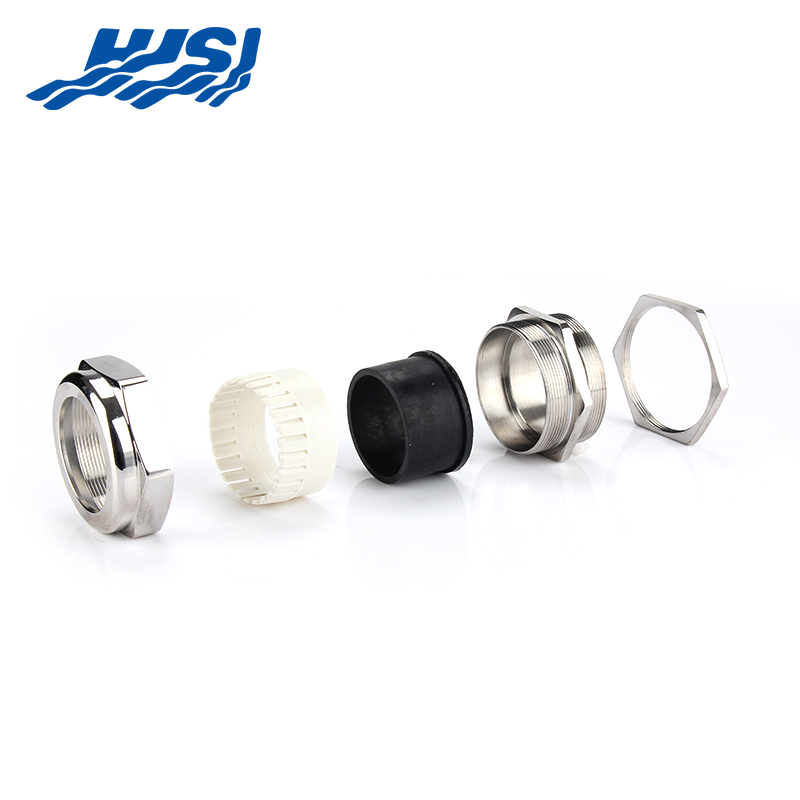Cable glands are essential components in electrical systems, designed to provide secure connections and protection for cables entering enclosures, panels, or equipment. Among the many types available, stainless cable glands, steel cable glands, and compression cable glands stand out for their reliability and adaptability. Each type is suited to specific applications, depending on the material, structure, and environment where it is used.
Stainless cable glands are manufactured using high-grade stainless steel, which is known for its resistance to corrosion, heat, and wear. These glands are widely utilized in environments where durability and chemical resistance are critical, such as marine industries, food processing plants, and chemical factories.

The primary advantage of stainless cable glands is their robustness, which ensures secure cable connections in harsh conditions. They are suitable for both armored and unarmoured cables and can withstand exposure to moisture, saltwater, and corrosive agents. This makes them ideal for outdoor or high-humidity settings.
Stainless cable glands are often equipped with sealing mechanisms to prevent ingress of dust and water, providing reliable protection for the cables and enhancing overall system safety. Their long lifespan and resistance to environmental factors make them a cost-effective choice for demanding applications.
Steel cable glands, typically made from galvanized or carbon steel, offer strong mechanical properties and good tensile strength. They are commonly used in construction, industrial automation, and heavy machinery due to their ability to endure substantial physical stress and impacts.
These glands are particularly well-suited for applications requiring robust support for cables, ensuring strain relief and protection from mechanical damage. The conductive nature of steel also provides effective grounding and shielding, which can be crucial in electrical installations where electromagnetic interference (EMI) needs to be managed.
Steel cable glands are often coated or treated to enhance resistance to rust and corrosion, making them a dependable option for environments where physical durability is prioritized. Their affordability and strength make them a preferred choice for large-scale industrial projects.
Compression cable glands are designed to provide a tight seal and secure connection between cables and equipment. These glands work by compressing an internal sealing mechanism, such as a rubber or silicone insert, as the gland is tightened. This creates a robust seal that prevents the ingress of dust, water, or other contaminants.
Compression cable glands are versatile and used across various industries, including telecommunications, energy, and manufacturing. They are compatible with a wide range of cable sizes and materials, making them highly adaptable for different setups.
One of the key benefits of compression cable glands is their ability to maintain IP-rated sealing, ensuring that cables are protected in environments where dust and water ingress could cause damage. This feature makes them indispensable for outdoor or industrial applications. Additionally, they are available in multiple materials, such as stainless steel, brass, and plastic, offering options for specific needs.
Stainless cable glands excel in corrosive and wet environments.
Steel cable glands provide strong mechanical performance and moderate resistance to rust when treated.
Compression cable glands are versatile for sealing in diverse environments, ensuring IP-rated protection.
Durability and Strength
Stainless cable glands offer predominant longevity in harsh conditions.
Steel cable glands are ideal for heavy-duty applications requiring mechanical strength.
Compression cable glands focus on maintaining secure seals without sacrificing adaptability.
Industry Use Cases
Stainless cable glands are common in marine, chemical, and food processing industries.
Steel cable glands are widely used in construction and heavy industrial applications.
Compression cable glands are favored in telecommunications, energy, and manufacturing.
Stainless cable glands, steel cable glands, and compression cable glands each serve unique roles in securing and protecting cables in electrical systems. Stainless cable glands offer durability in corrosive environments, steel cable glands provide strength for industrial use, and compression cable glands ensure adaptable sealing solutions. Selecting the right cable gland depends on the specific environmental conditions, cable requirements, and industry standards.